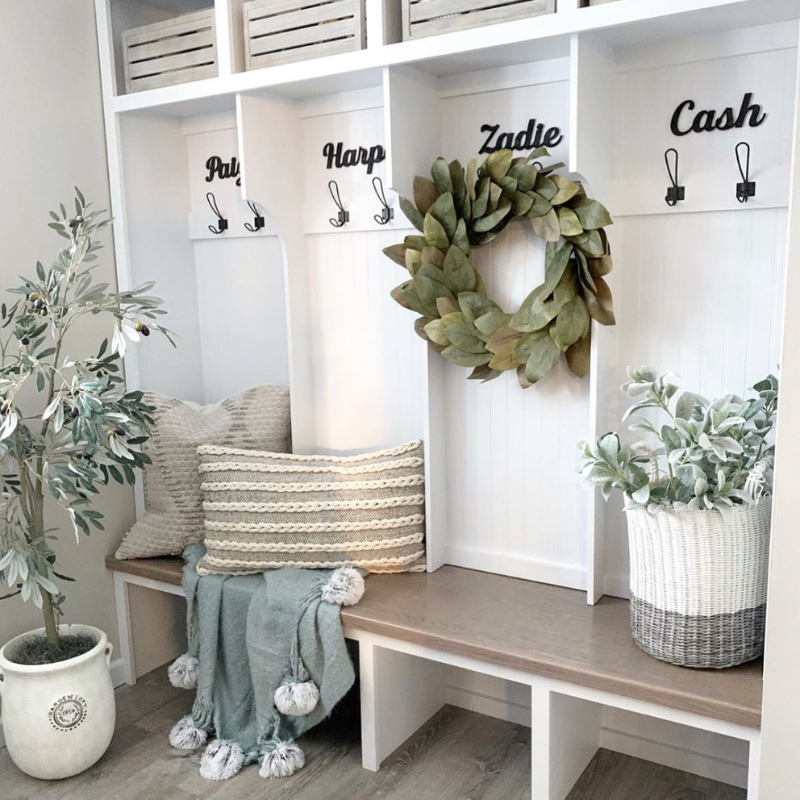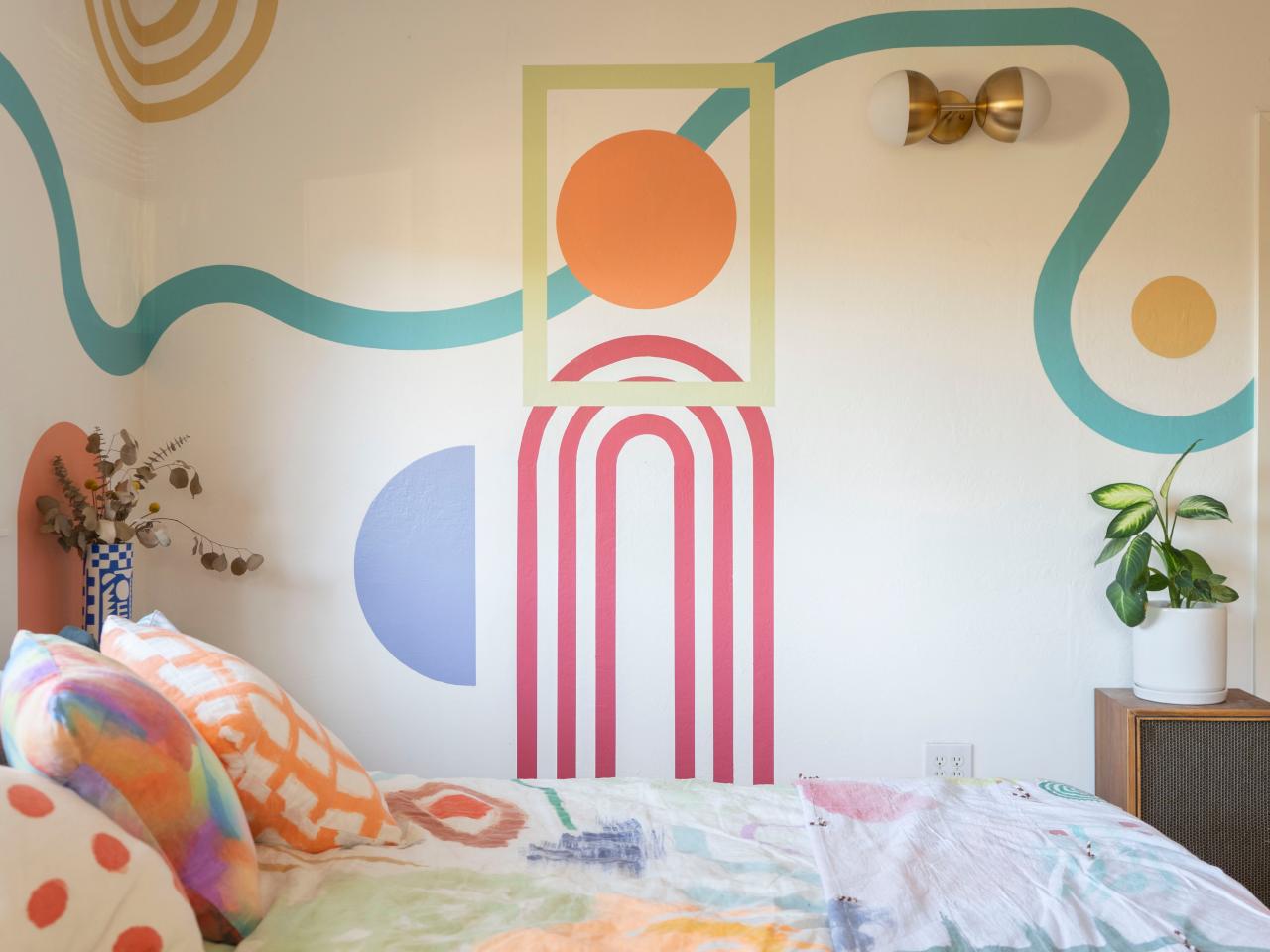DIY home projects are taking center stage, offering homeowners a chance to personalize their spaces and express their creativity. Whether you’re a seasoned DIYer or a curious beginner, the allure of transforming your home with your own hands is undeniable. From simple upgrades to ambitious renovations, DIY projects provide a sense of accomplishment and pride, allowing you to create a home that truly reflects your unique style and needs.
This comprehensive guide delves into the world of DIY home projects, providing insights into planning, essential skills, design ideas, and safety considerations. We’ll explore the benefits of DIY, such as cost savings, creative expression, and the satisfaction of bringing your vision to life. From crafting cozy interiors to enhancing your outdoor living spaces, this guide empowers you to embark on your own DIY journey.
DIY Home




The allure of DIY home projects has seen a significant surge in recent years, driven by a confluence of factors. With rising costs of professional services, the desire for personalization, and a growing appreciation for hands-on creativity, homeowners are increasingly embracing the DIY ethos.
Benefits of DIY Home Projects
DIY projects offer a compelling blend of practicality and personal fulfillment. They empower homeowners to take control of their living spaces, allowing them to express their unique style and preferences. The financial benefits of DIY are undeniable, as it can significantly reduce the cost of renovations and repairs. Additionally, the satisfaction derived from completing a DIY project can be immensely rewarding, fostering a sense of accomplishment and pride in one’s handiwork.
Common DIY Home Projects
The realm of DIY home projects is vast and diverse, encompassing a wide range of tasks, from simple repairs to ambitious renovations. Some of the most popular and achievable DIY projects include:
- Painting: A fresh coat of paint can instantly transform a room, giving it a new lease on life. Painting is a relatively straightforward project that can be tackled by most homeowners with a little bit of research and practice.
- Wall Decor: Adding personality to walls through artwork, shelves, mirrors, or wallpaper is a simple yet impactful way to enhance a space. These projects require minimal tools and can be customized to suit individual tastes.
- Furniture Refinishing: Giving old furniture a new life through sanding, painting, or reupholstering can be a rewarding and cost-effective way to update a room.
- Simple Repairs: Fixing leaky faucets, replacing light fixtures, or patching drywall are common repairs that can be tackled by most homeowners with the right tools and instructions.
- Outdoor Projects: Creating a backyard oasis with a fire pit, patio furniture, or a small garden can be a fulfilling and enjoyable DIY project.
DIY Home




Embarking on DIY projects at home can be a rewarding experience, allowing you to personalize your space and save money. However, it’s crucial to possess fundamental skills and techniques to ensure successful outcomes. This section delves into essential DIY knowledge, encompassing measuring, cutting, using power tools, and executing common techniques like painting, wallpapering, and tiling.
Basic DIY Skills
Mastering basic DIY skills forms the foundation for any home improvement project. These skills include:
- Measuring: Accurate measurements are paramount for ensuring proper fit and avoiding costly mistakes. Familiarize yourself with measuring tools like tape measures, rulers, and levels. When measuring, it’s essential to take multiple readings for accuracy and to account for potential discrepancies. For example, when cutting a piece of wood, it’s advisable to measure twice and cut once.
- Cutting: Cutting materials accurately requires the right tools and techniques. For wood, a saw is essential, while a utility knife is suitable for cutting materials like cardboard, vinyl, and fabric. When cutting, it’s crucial to use a cutting guide for straight lines and to apply consistent pressure for clean cuts. Additionally, always wear safety glasses and gloves to protect yourself from injuries.
- Using Power Tools: Power tools can significantly enhance efficiency and precision in DIY projects. However, it’s crucial to understand the operation and safety precautions associated with each tool. Common power tools include drills, saws, sanders, and nail guns. Before using any power tool, read the manufacturer’s instructions carefully and always wear appropriate safety gear, such as gloves, safety glasses, and hearing protection.
Common DIY Techniques
Various techniques are commonly employed in DIY projects. Understanding these techniques will empower you to tackle diverse tasks around your home.
DIY home projects can be a great way to personalize your space and add a touch of your own style. If you’re looking for some inspiration, check out these arts and crafts ideas for adults that can be easily adapted for your home.
From upcycling old furniture to creating unique wall art, there are endless possibilities to transform your house into a cozy and stylish haven.
- Painting: Painting is a versatile technique used to refresh walls, furniture, and other surfaces. It involves preparing the surface by cleaning, sanding, and applying primer. Choose the right type of paint based on the surface and desired finish. When applying paint, use smooth, even strokes and allow ample drying time between coats. Ensure proper ventilation during and after painting.
- Wallpapering: Wallpapering adds a decorative touch to walls and can create various patterns and textures. It requires careful preparation, including measuring, cutting, and applying paste to the wallpaper. Align the wallpaper carefully, smoothing out any bubbles or wrinkles. Use a seam roller to ensure proper adhesion. Allow the wallpaper to dry completely before applying any additional decorations or furniture.
- Tiling: Tiling is a technique used to create durable and aesthetically pleasing surfaces in bathrooms, kitchens, and other areas. It involves preparing the surface, laying down mortar, and setting tiles. Ensure the tiles are level and spaced evenly. Use grout to fill in the gaps between tiles and seal the surface for protection. Allow the grout to dry completely before using the tiled area.
Resources for Learning DIY Skills
Numerous resources are available to help you learn new DIY skills and enhance your existing knowledge.
- Online Tutorials: Websites like YouTube, Skillshare, and Udemy offer a wealth of free and paid DIY tutorials. These tutorials provide step-by-step instructions, visual demonstrations, and expert tips. You can find tutorials on a wide range of DIY topics, from basic repairs to complex renovations.
- Workshops: Local community centers, hardware stores, and DIY retailers often host workshops that provide hands-on training in specific DIY skills. These workshops allow you to learn from experienced instructors and gain practical experience. Many workshops offer beginner-friendly options, making them ideal for those new to DIY.
- Books and Magazines: DIY books and magazines provide comprehensive guides and detailed instructions on various home improvement projects. These resources offer detailed information, step-by-step illustrations, and expert advice. You can find books and magazines dedicated to specific DIY topics, such as plumbing, electrical work, or carpentry.
DIY Home




Creating a sustainable and eco-friendly home is not just about protecting the environment; it’s also about creating a healthier and more comfortable living space for yourself and your family. By incorporating DIY projects that promote sustainability, you can reduce your environmental footprint while saving money and improving your home’s overall well-being.
Composting
Composting is a fantastic way to reduce waste and create nutrient-rich soil for your garden. By composting kitchen scraps, yard waste, and other organic materials, you can significantly reduce the amount of trash you send to landfills.
- Build a compost bin: You can easily build a compost bin using readily available materials like pallets, wood, or even old garbage cans. There are various designs available online, so choose one that suits your space and needs.
- Use a composting tumbler: Composting tumblers are convenient and efficient, allowing you to easily turn the compost and monitor its progress. They are also relatively compact, making them suitable for smaller spaces.
- Start a worm composting bin: Worm composting, or vermicomposting, is a great option for those who have limited space or prefer a less messy composting method. Worms break down organic matter quickly and efficiently, producing nutrient-rich castings that can be used as fertilizer.
Water Conservation
Water conservation is essential for both the environment and your wallet. Simple DIY projects can help you reduce water usage and save money on your water bill.
- Install low-flow showerheads and faucets: Low-flow fixtures reduce water usage without sacrificing performance. They are readily available and relatively inexpensive to install.
- Collect rainwater: Collect rainwater in a barrel or tank and use it for watering plants or flushing toilets. You can even create a DIY rainwater harvesting system using materials like plastic barrels, downspouts, and filters.
- Fix leaks promptly: Leaky faucets and pipes can waste a significant amount of water. Repairing leaks promptly can save you money and water in the long run.
- Water your lawn efficiently: Use a watering can or a soaker hose to water your lawn, rather than a sprinkler that can waste water through evaporation. Water your lawn in the early morning or evening when temperatures are cooler to minimize evaporation.
Energy Efficiency
Energy efficiency is crucial for reducing your carbon footprint and saving money on your energy bills. DIY projects can significantly improve your home’s energy efficiency without requiring extensive renovations.
- Caulk and weatherstrip windows and doors: Drafts around windows and doors can cause significant heat loss in the winter and heat gain in the summer. Caulk and weatherstrip to seal gaps and prevent air leakage.
- Install energy-efficient light bulbs: LED and CFL bulbs use significantly less energy than traditional incandescent bulbs, reducing your energy consumption and saving money on your electricity bill.
- Add insulation: Insulating your attic, walls, and floors can significantly improve your home’s energy efficiency, reducing heat loss in the winter and heat gain in the summer.
- Install a programmable thermostat: A programmable thermostat allows you to set different temperatures for different times of day, reducing energy consumption and saving money on your heating and cooling bills.
Repurposing and Upcycling Materials
Repurposing and upcycling materials are excellent ways to reduce waste and create unique and functional items for your home.
- Turn old pallets into furniture: Pallets are readily available and can be transformed into various furniture pieces like coffee tables, benches, or shelves.
- Repurpose old jars and bottles: Use old jars and bottles as storage containers, vases, or even decorative elements. You can paint them, decorate them, or leave them as they are to add a rustic touch to your home.
- Upcycle old clothes into rugs or blankets: Cut up old clothes and use them to create a unique rug or blanket. You can use different fabrics and patterns to create a personalized and eco-friendly piece.
Benefits of Eco-Friendly Materials and Practices
Using eco-friendly materials and practices in DIY projects has numerous benefits, including:
- Reduced environmental impact: Eco-friendly materials and practices minimize waste and pollution, contributing to a healthier environment.
- Improved indoor air quality: Using natural and non-toxic materials can improve the air quality in your home, creating a healthier living environment.
- Cost savings: Eco-friendly materials and practices often offer long-term cost savings, reducing energy consumption and waste.
- Increased durability: Many eco-friendly materials are known for their durability and longevity, resulting in fewer replacements and less waste in the long run.
DIY Home




Welcome to the exciting world of DIY home projects! Whether you’re a seasoned renovator or a curious beginner, the possibilities for transforming your living space are endless. This section will provide you with inspiration, resources, and practical tools to embark on your DIY journey.
Inspiring DIY Home Projects
Numerous online communities and magazines showcase stunning DIY projects, offering a wealth of ideas for every skill level and budget. Here are some examples:
- Pinterest: This platform is a treasure trove of DIY inspiration, with countless boards dedicated to home improvement, furniture makeovers, and creative crafts. You can find projects ranging from simple wall art to complex kitchen renovations.
- Instagram: Follow DIY enthusiasts and home décor accounts on Instagram for daily doses of inspiration and step-by-step project tutorials. Hashtags like #DIYhome, #homedecor, and #renovation provide a starting point for your search.
- DIY Magazines: Magazines like “This Old House,” “Better Homes & Gardens,” and “Family Handyman” offer detailed project plans, expert advice, and stunning before-and-after photos. These publications provide a tangible and visually appealing source of inspiration.
Reputable Online Resources for DIY Projects, Diy home
The internet is a vast repository of DIY information. These websites, blogs, and forums provide valuable resources, tips, and guidance for your home improvement projects:
- Home Depot: This home improvement retailer offers a comprehensive website with DIY guides, project ideas, and instructional videos. Their website also provides access to their extensive product catalog, making it a one-stop shop for all your project needs.
- The Home Edit: This website and social media presence focus on organization and home storage solutions. Their inspiring before-and-after transformations and practical tips can help you maximize your space and create a functional and stylish home.
- Ana White: This website is a popular resource for DIY furniture plans and projects. Ana White offers free plans and tutorials for building everything from simple benches to complex kitchen cabinets.
- DIY Forums: Online forums like “GardenWeb” and “The Home Depot Community” provide a platform for connecting with other DIY enthusiasts, sharing tips, and seeking advice on specific projects.
DIY Tools and Materials
Having the right tools and materials is essential for successful DIY projects. Here’s a table outlining some common tools and materials, their uses, advantages, and disadvantages:
| Tool/Material | Uses | Advantages | Disadvantages |
|---|---|---|---|
| Power Drill | Drilling holes, driving screws, mixing paint | Versatility, speed, efficiency | Can be noisy, requires caution to avoid injury |
| Measuring Tape | Accurate measurement of length, width, and depth | Essential for precise cuts and placement | Can be prone to wear and tear |
| Level | Ensuring surfaces are horizontal or vertical | Essential for accurate installation and aesthetics | Can be bulky and inconvenient for small projects |
| Saw | Cutting wood, plastic, and metal | Variety of types available for different materials and cuts | Can be dangerous if not used properly |
| Screwdriver | Driving and removing screws | Variety of sizes and types for different screws | Can be tedious for large projects |
| Paint Brush | Applying paint to surfaces | Variety of sizes and shapes for different applications | Can be messy and time-consuming |
| Wood Glue | Adhering wood pieces together | Strong and durable bond | Can be messy and require clamping |
| Caulk | Sealing gaps and cracks, creating a watertight seal | Versatile and easy to apply | Can be messy and require cleanup |
Summary

The world of DIY home projects is a vibrant and ever-evolving landscape. As technology continues to advance, new possibilities for DIY innovation emerge. Whether you’re tackling a small refresh or a full-scale renovation, embracing the DIY spirit allows you to create a home that is both functional and aesthetically pleasing. With careful planning, a little creativity, and a willingness to learn, you can transform your home into a space that truly reflects your individuality and brings you joy for years to come.




